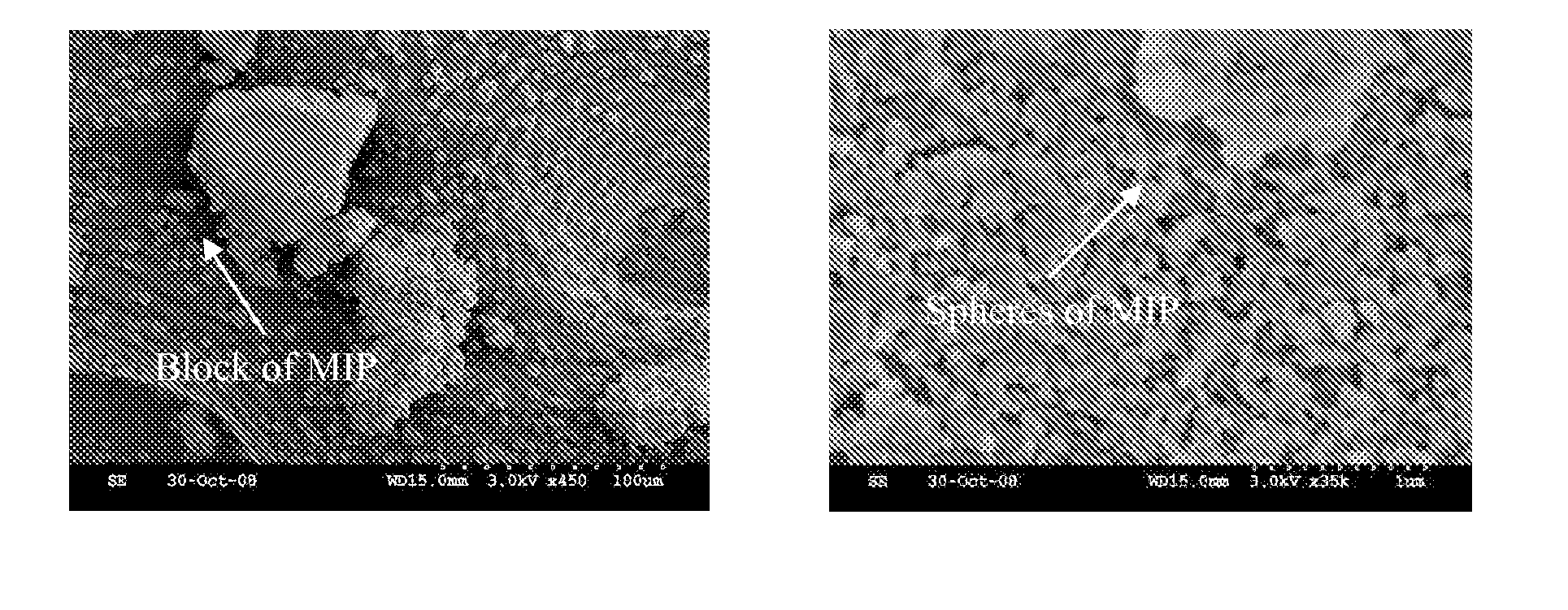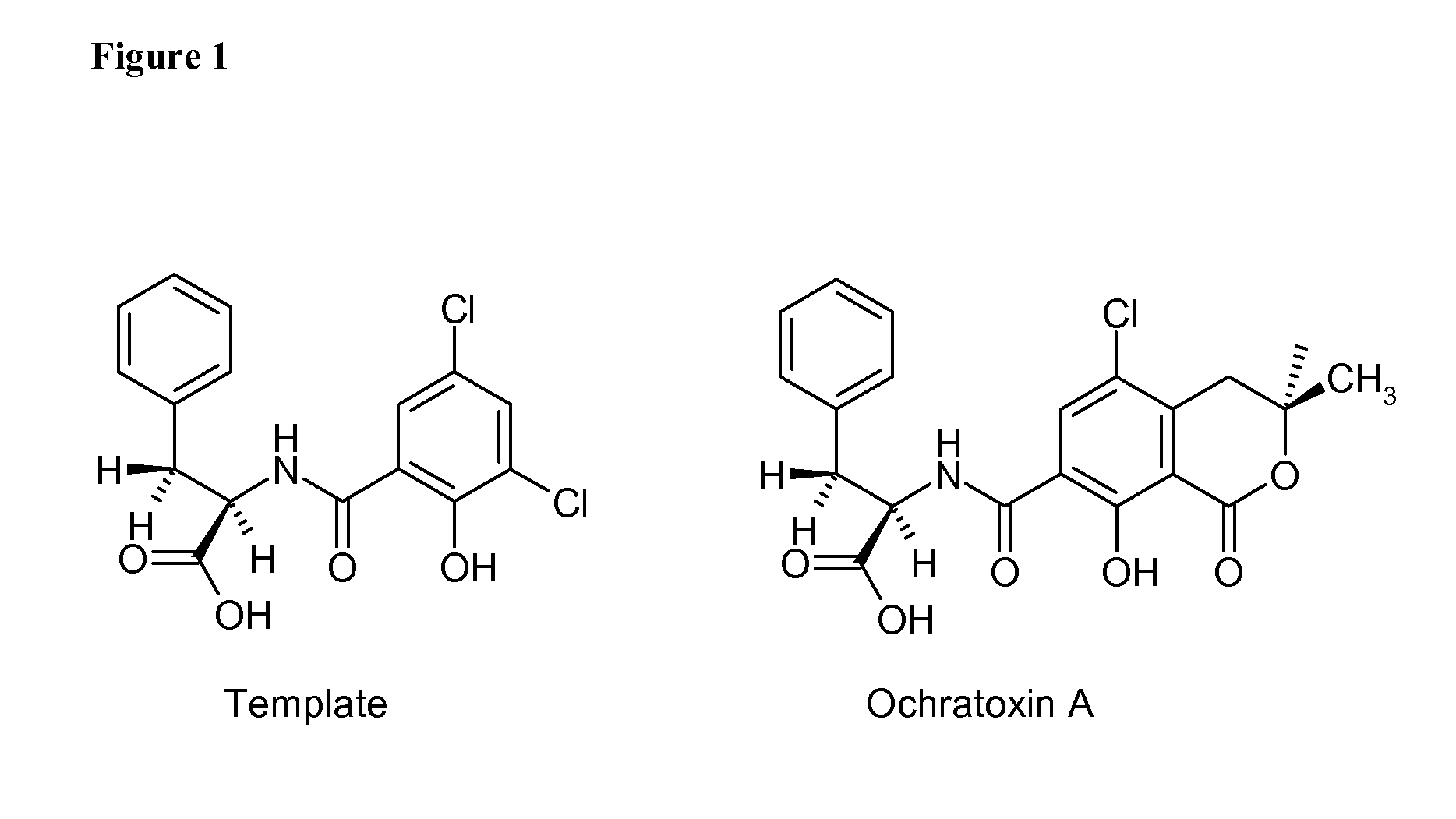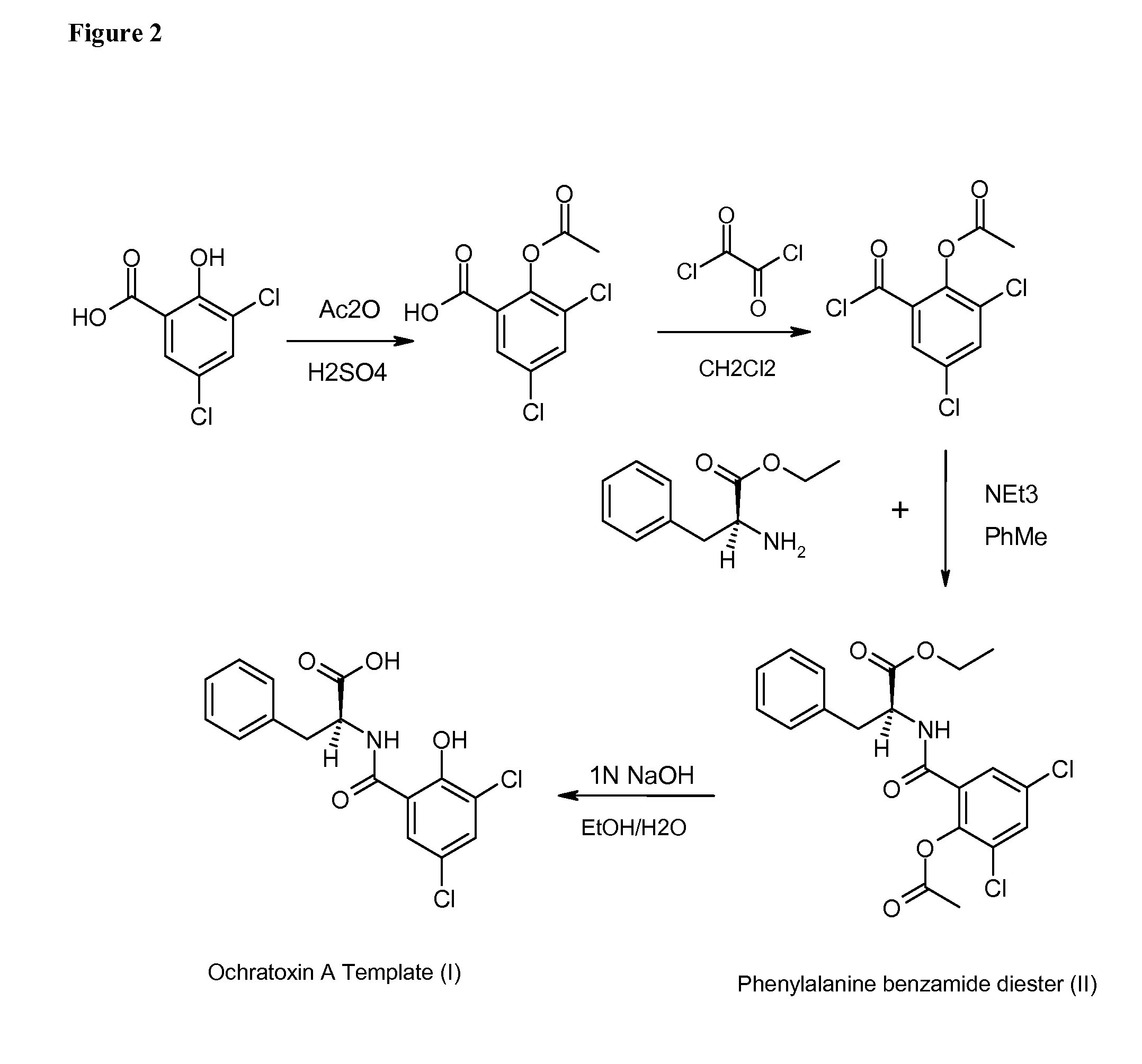Synthetic mycotoxin adsorbents and methods of making and utilizing the same
a technology of mycotoxin and adsorbent, which is applied in the field of synthetic mycotoxin adsorbents and methods of making and utilizing the same, can solve the problems of negative economic impact of mycotoxin contamination on food and feed producers, particularly grain and poultry producers, and insufficient temperature treatment methods of reducing the prevalence of mycotoxins
- Summary
- Abstract
- Description
- Claims
- Application Information
AI Technical Summary
Benefits of technology
Problems solved by technology
Method used
Image
Examples
example 1
Ochratoxin A Template Synthesis
[0164]Preparation of 2-acetoxy-3,5-dichlorobenzoic acid. A 1 L, round-bottom, three neck flask equipped with: a mechanical stirrer, a thermometer and a 125 mL dropping funnel with pressure equilibration was placed in a water bath maintained at 65° C. The following reagents were subsequently charged to the flask with an efficient stirring: 250 mL of dry toluene, 2.5 mL of concentrated sulfuric acid and 207 g of well ground, solid 3,5-dichlorosalicylic acid, which forms a mobile suspension. When the temperature of this constantly stirred mixture reached 60° C. (with the water bath temperature maintained at 65° C.) a drop-wise addition of 108 g (100 mL) of acetic anhydride was initiated and completed within 30 min. During the acetic anhydride addition the temperature of the reaction mixture was not allowed to exceed 75° C. After completing the addition, the mixture was stirred and heated to 70° C. for another 4 h. After this time, the agitation was stoppe...
example 2
MIP-OTA Synthesis in Toluene-Cyclohexane Mixture
[0169]Five hundred milliliters of toluene, 35.42 g (0.1M) of OTA template, 16.18 mL (0.15 M) of 2-vinylpyridine, 12.13 mL (0.1 M) of 2-hydroxyethylmethacrylate, 235.75 mL (1.25 M) of ethylene glycol dimethacrylate and 2.46 g (15 mM) of AIBN were placed in a 3 L four necks flask equipped with a: mechanical stirrer, reflux condenser, thermometer and nitrogen inlet / outlet. The resulting clear solution was stirred for 1 h at room temperature and a constant stream of nitrogen passed through the vessel (e.g., to remove oxygen that can inhibit polymerization). The flask was then heated to 60° C. and the mixture vigorously stirred. Polymerization occurred as long as the temperature of the solution increased to ˜55° C. (e.g., observed by an increase in the viscosity of the solution). Fifteen minutes after polymerization began, 600 mL of (1:1) cyclohexane / toluene mixture was added in a single portion to promote polymer sphere separation from the...
example 3
OTA MIP Synthesis in Acetonitrile
[0171]Five hundred milliliters of acetonitrile, 17.71 g (50 mM) of OTA template, 8.1 mL (75 mM) of 2-vinylpyridine, 6.1 mL (50 mM) of 2-hydroxyethylmethacrylate, 117.9 mL (625 mM) of ethylene glycol dimethacrylate and 1.23 g (15 mM) of AIBN were placed in a 3 L four necks flask equipped with a: mechanical stirrer, a 500 mL dropping funnel with pressure equilibration, a thermometer and nitrogen inlet / outlet and heated with an electric heating mantel. The resulting clear solution was stirred for 1 h at room temperature and a constant stream of nitrogen passed through the vessel (e.g., to remove oxygen that can inhibit polymerization). Afterwards, the flask was heated to 60° C. and the mixture vigorously stirred. Polymerization ensued as long as the temperature of the solution increased to ˜55° C. (e.g., observed by increased viscosity of the solution). Thirty minutes after polymerization started (e.g., when gel-formation is observable), 1.5 L of aceton...
PUM
| Property | Measurement | Unit |
|---|---|---|
| Temperature | aaaaa | aaaaa |
| Temperature | aaaaa | aaaaa |
| Temperature | aaaaa | aaaaa |
Abstract
Description
Claims
Application Information
 Login to View More
Login to View More - R&D
- Intellectual Property
- Life Sciences
- Materials
- Tech Scout
- Unparalleled Data Quality
- Higher Quality Content
- 60% Fewer Hallucinations
Browse by: Latest US Patents, China's latest patents, Technical Efficacy Thesaurus, Application Domain, Technology Topic, Popular Technical Reports.
© 2025 PatSnap. All rights reserved.Legal|Privacy policy|Modern Slavery Act Transparency Statement|Sitemap|About US| Contact US: help@patsnap.com



